Text & photos by Luca Schiera
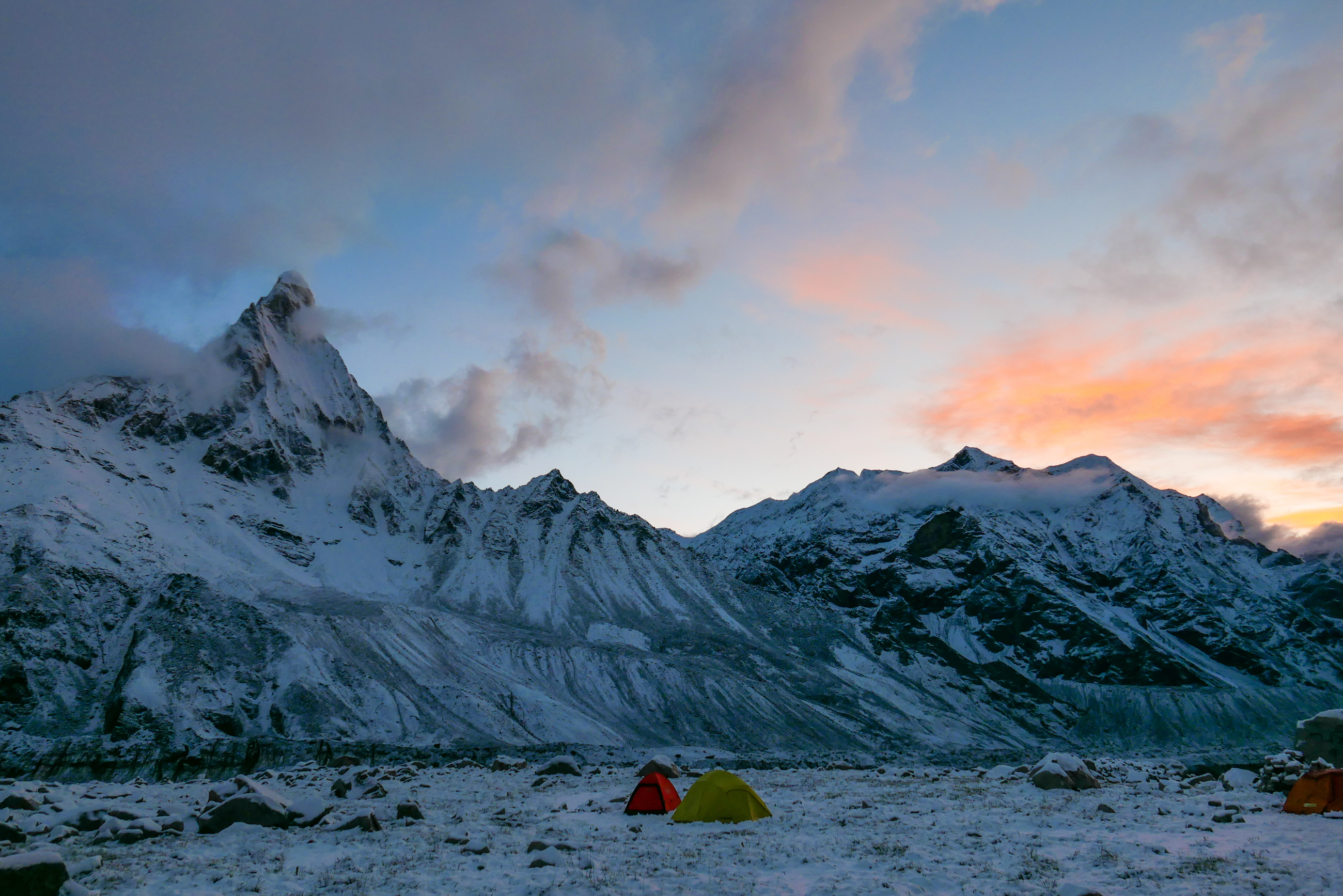
A story to remember: ascent of the inviolate west face of Bhagirathi IV
Once upon a time there was a king named Bhagiratha. The legend tells that, when he became prince of the Sagaras, went to meditate on the Himalayas for a thousand years to please Ganga, the goddess of the river Ganges, in order to obtain the liberation of his ancestors from the curse of Kapila.
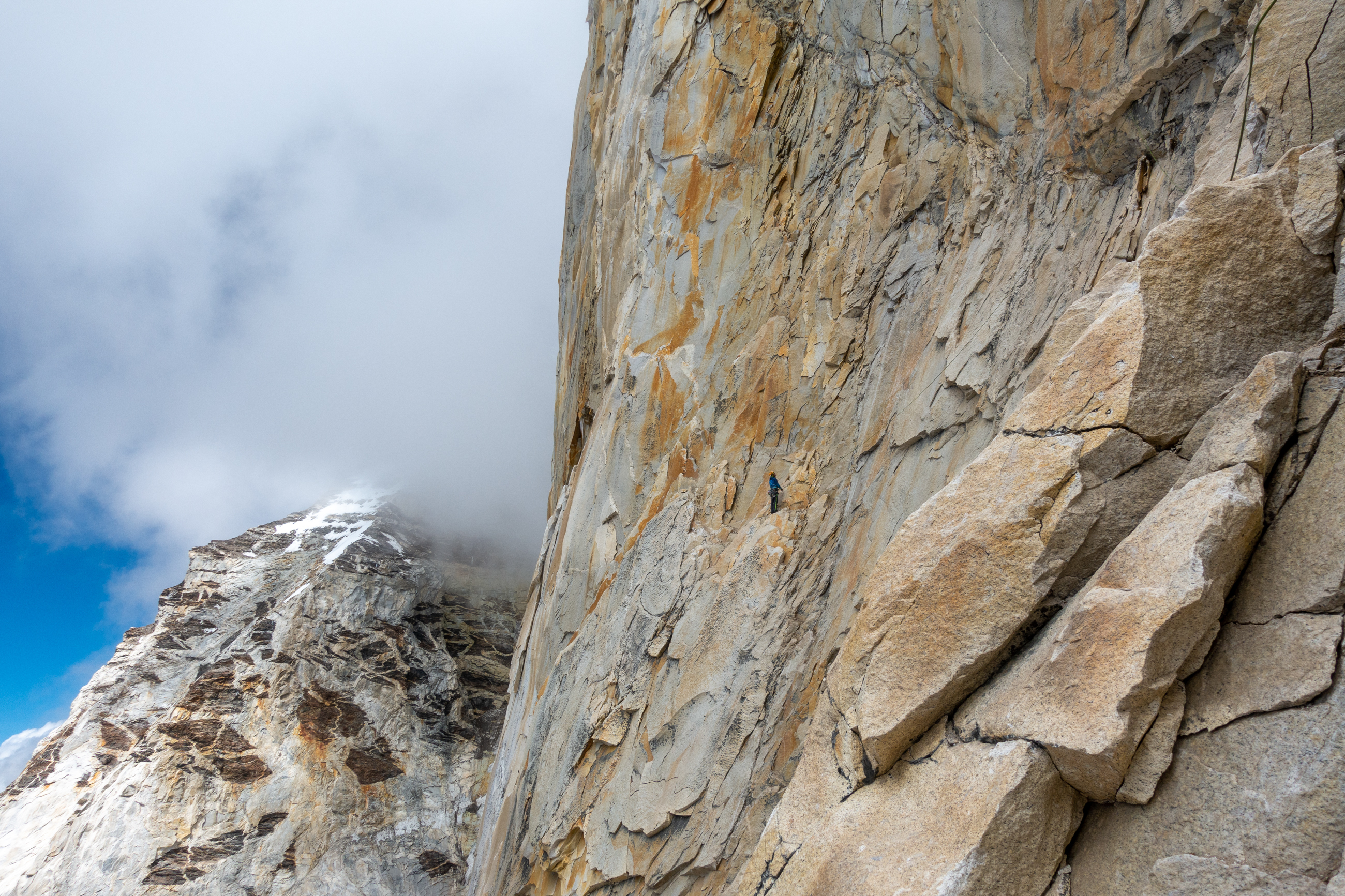
Ganga told him that if she had descended from the sky the force of her fall would have been devastating. She asked him to get Shiva’s favor because he would be the only one able to support her. He accepted and brought the goddess to the earth in the form of the Ganges river, filling the sea. From the Goumuk glacier, the source of the river, rise the four imposing mountains that took their name from the king: the Bhagirathi I, II, III, and IV in descending order of height.
This is the story of the smallest, the Bhagirathi IV.
With its 6200 meters, it is the lowest mountain of the chain and our history with it starts four years ago, in 2015. It is winter and we are looking for an interesting spot for the following summer but we have no precise ideas. The name of Bhagirathi pops up, I think it’s a bit saturated now and I don’t expect much from it. But from the photos it looks very interesting: it has a beautiful shape, the granite glitters in the sun and it looks very steep. People have been tried to climb it for many years but with no success. We decide to go there after the monsoon.
The first impact is traumatic, Delhi is hot and suffocating at night, the air is saturated with humidity and smog but only with the morning light we can understand how much it is crowded. Fortunately for us, we immediately jump into a van towards the mountains. The climate becomes much more bearable and the temperature drops until we reach the end of the road after two days of travel.
We are in Gangotri, a 3000 m high village divided in two by the river Ganges, a place of pilgrimage for Hindus and western tourists. From here on we will proceed for two days on foot together with the base camp team.
The season seems good, the monsoon is over, there is good weather even if it’s still cold. We start climbing what appears to be the most logical route of the mountain, but as soon as the sun touches the wall, after the first pitches, some stones start to fall, we don’t know how to protect ourselves, it is only half a day but we decide to go down. With many more days available we decide to try the other route made of cracks on the right, the real problem is that it will take us exactly where the schist is higher and more problematic. We have no idea how that kind of rock will be and how we will overcome it. The only thing to do is to try.

The second week of September is very cold and in the morning we have to climb without gloves with various degrees below zero, soon our fingers become numb and after a few pitches it begins to snow. After the second refuge, we reach an altitude of 5900 m, around us just hardpack, everything is smooth. I go down and a few minutes later the sun comes out and the snow beneath my feet disappears. Let’s go home.
In the following seasons the thought of the Bhagirathi IV returns to my mind more and more frequently, until it becomes too insistent, we have to go back. We arrive at the base camp pretty early, the monsoon has not yet passed and even if it is August it’s snowing, we fear it will become even colder than four years ago. We take advantage of bad days to bring our gears and stuff under the wall and acclimatize. This time we’re really ready.
First days of September.
The weather is perfect, the wall has seems excellent and it’s hot, we go up to the advanced base camp at 5000 m high ready to hit the road the next day. As we rest, two large piles of stones come off and in a few seconds they completely invest our entire climbing route. Now what? Shall we go for it anyway? That same afternoon, we agree that attempting it would be too dangerous so we take a look at the other walls. Nothing convinces us, we go back to the base camp again without an alternative plan.
Some days pass and the only solution that comes our mind is to try again the most obvious route in the middle wall, the one that had rejected us four years earlier, hoping that with time we have gained more experience and ability to climb it.
We start, ready for five days on the wall, we know that we will spend at least two days advancing for a few meters, after which we hope to be able to continue faster towards the summit, we will decide how to go down only on the last day.
It is very cold in the morning, after some time, with great surprise, we find an old belay of someone coming directly from below us, we go to see what we have over our heads but something is not right: why have they arrived here and then continued on if we are in the dihedral? The answer comes early, looking above us we see that the crack continues upwards with long breaks and then disappears completely after about two hundred meters where there’s a roof. It is an unexpected surprise, we were sure to have overcome the greatest difficulties, even if we could pass that it would take us many days that we do not have. The only solution seems to go down again.
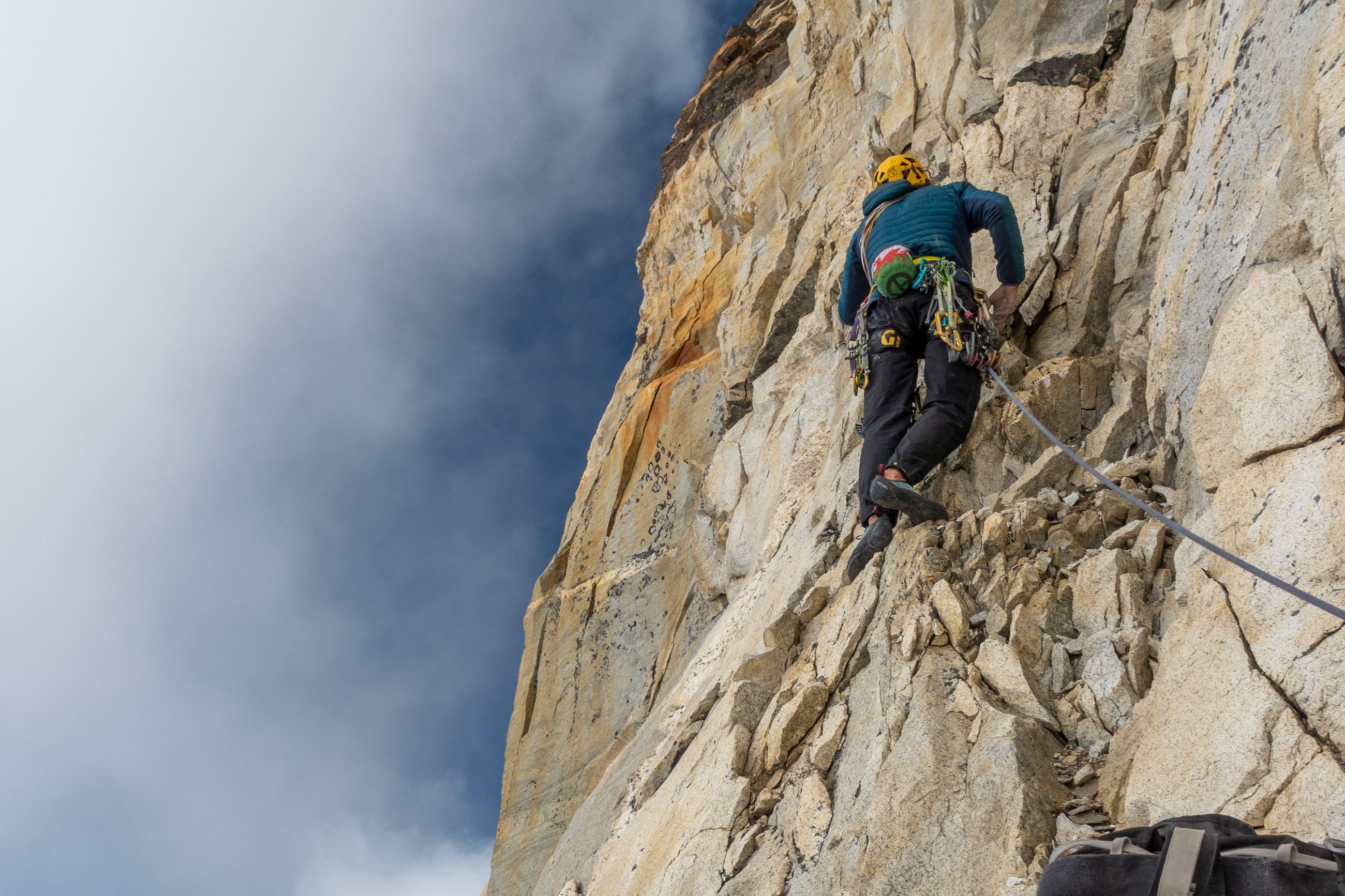
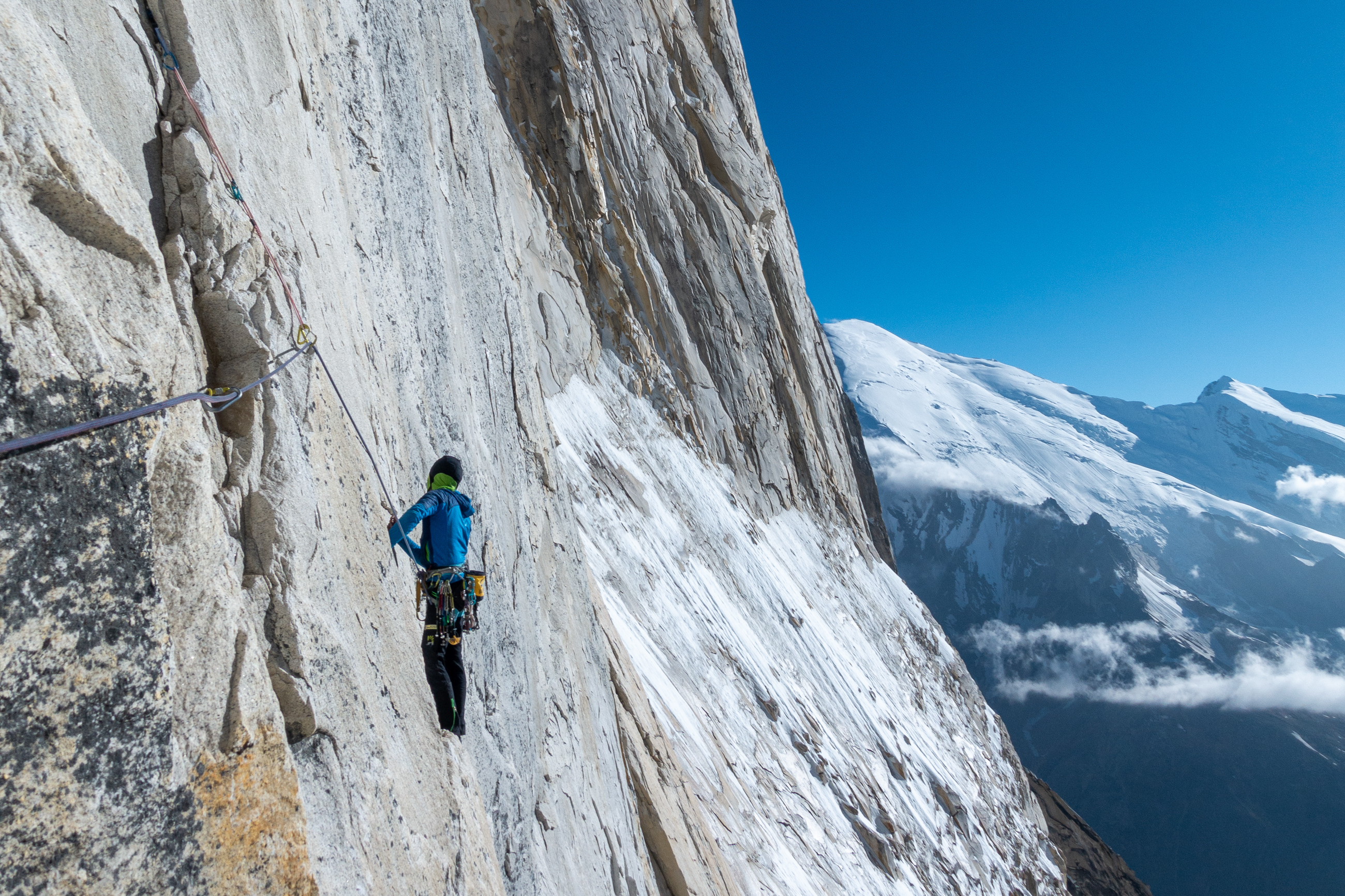
At the base camp we are again without an idea, with little hope but at least many days still available. We start to timidly think again about the right route even though we don’t know how to deal with it. There haven’t been any falls of rocks lately but the idea of being in that place does not attract us that much, we let a little time go by to clear our minds or go home. But we don’t want to leave things halfway. We arrived here for a specific reason, we decide to go for it but we should be much faster, the big advantage is that we already know the route.
We wake up at midnight on September 15th from the advanced camp and begin to climb the base wall towards the beginning of the route, it is not cold and there is a full moon. We climb the first pitches in the dark, we know which cracks to follow and we gain altitude even though climbing is disturbed by the debris of the landslide from few weeks before. We proceed quickly and in the early afternoon we arrive at the crossroads where we took the wrong route last time.
After some difficult movements we continue on the long dihedral where the quality of the rock begins to drop drastically anticipating the worst part, the black schist.
It is night and we don’t know where to camp. The summit ridge is above us so we decide to continue and reach it. At 11 pm we are all standing on top, it’s dark and unfortunately we can’t see much around us, only the profiles of the highest mountains illuminated by the moon. On the west side there’s a 800 meter high rock wall while on the opposite side there seems to be only a small rock jump and then a long slope down to the valley, we go down that way and find a place to camp. The next day we walk towards the base camp, we pack our things and move under another mountain.
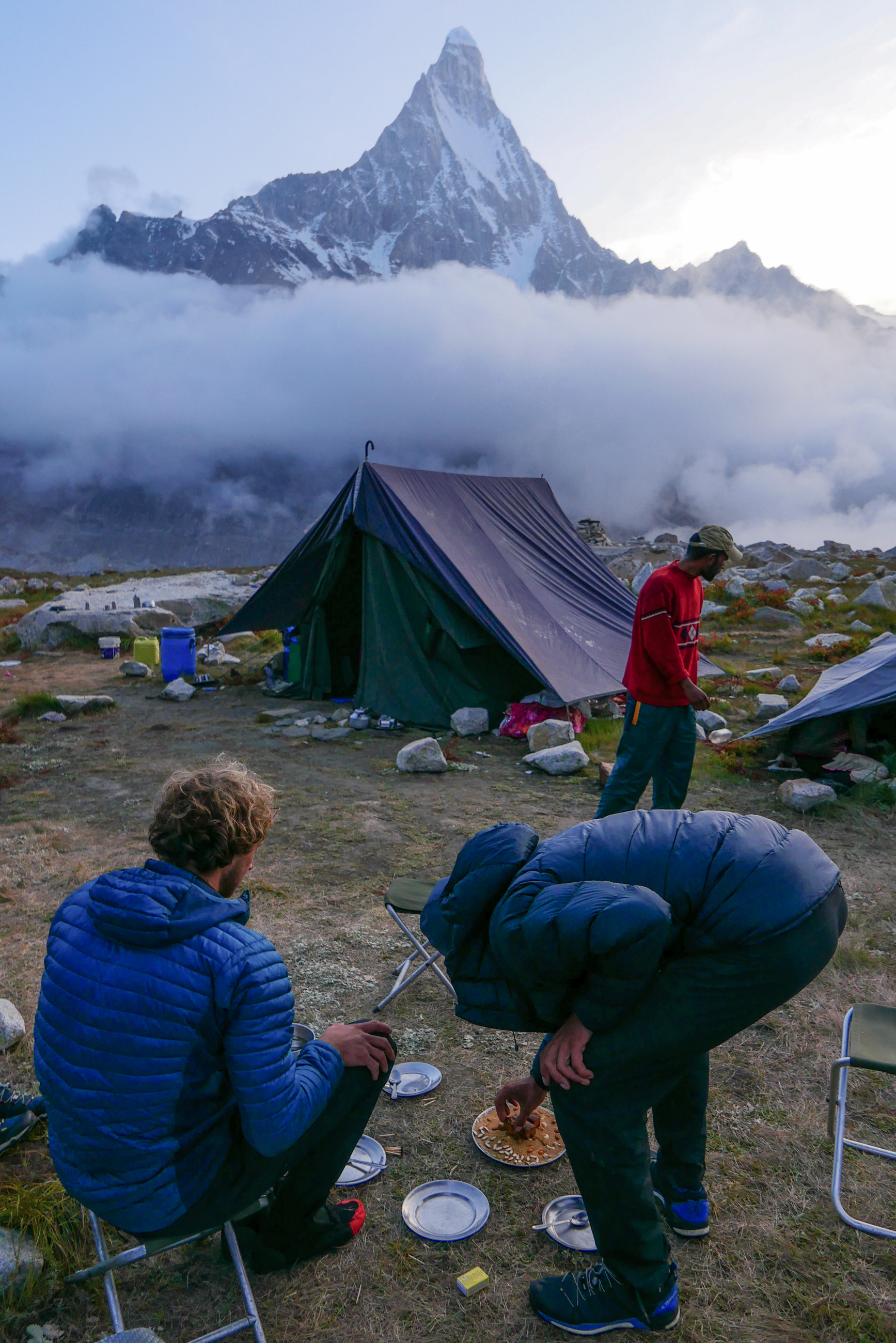
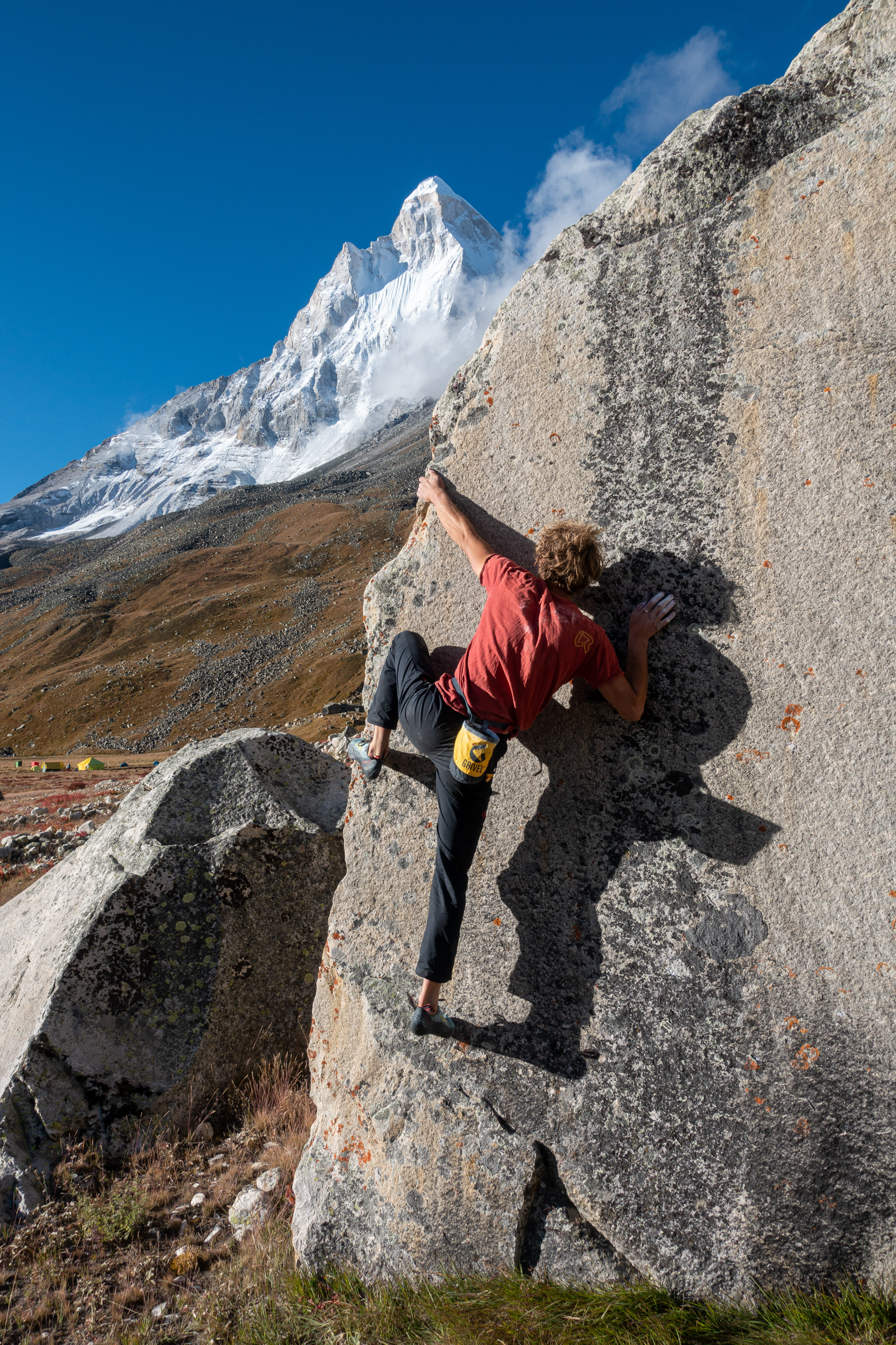
Two days later we are at the base of Shivling, perhaps the most beautiful mountain in the area, with a particular characteristic: it has two perfectly symmetrical peaks. The route we want to climb is the easiest of the mountain, the west ridge. It starts from at 5000 m with a white compact granite edge, with increasing difficulties and then suddenly stop against a huge 6000 m suspended serac. From there you can climb either one or the other peak without great difficulty. We are well acclimatized but we have only a few days left, we are afraid that the perfect weather that lasted throughout September will soon start to change. We climb the rock edge and reach the serac in the afternoon.
We set our tent there to spend the night but the sounds of rocks falling down wake us up, we know we are safe but the darkness amplifies our fear. We set off again in the morning and climb the steep ice wall in just two hours. We are in this surreal place, with the two peaks on the right and left, 500 meters higher from us. We leave the gears and continue in line until the top, luckily the sky is clear and finally we have an overview of the mountains. We climb down the icy slope and luckily we are able to go down safely from the serac. The next day we are at base camp, now that we have completed our project we can finally go back home.
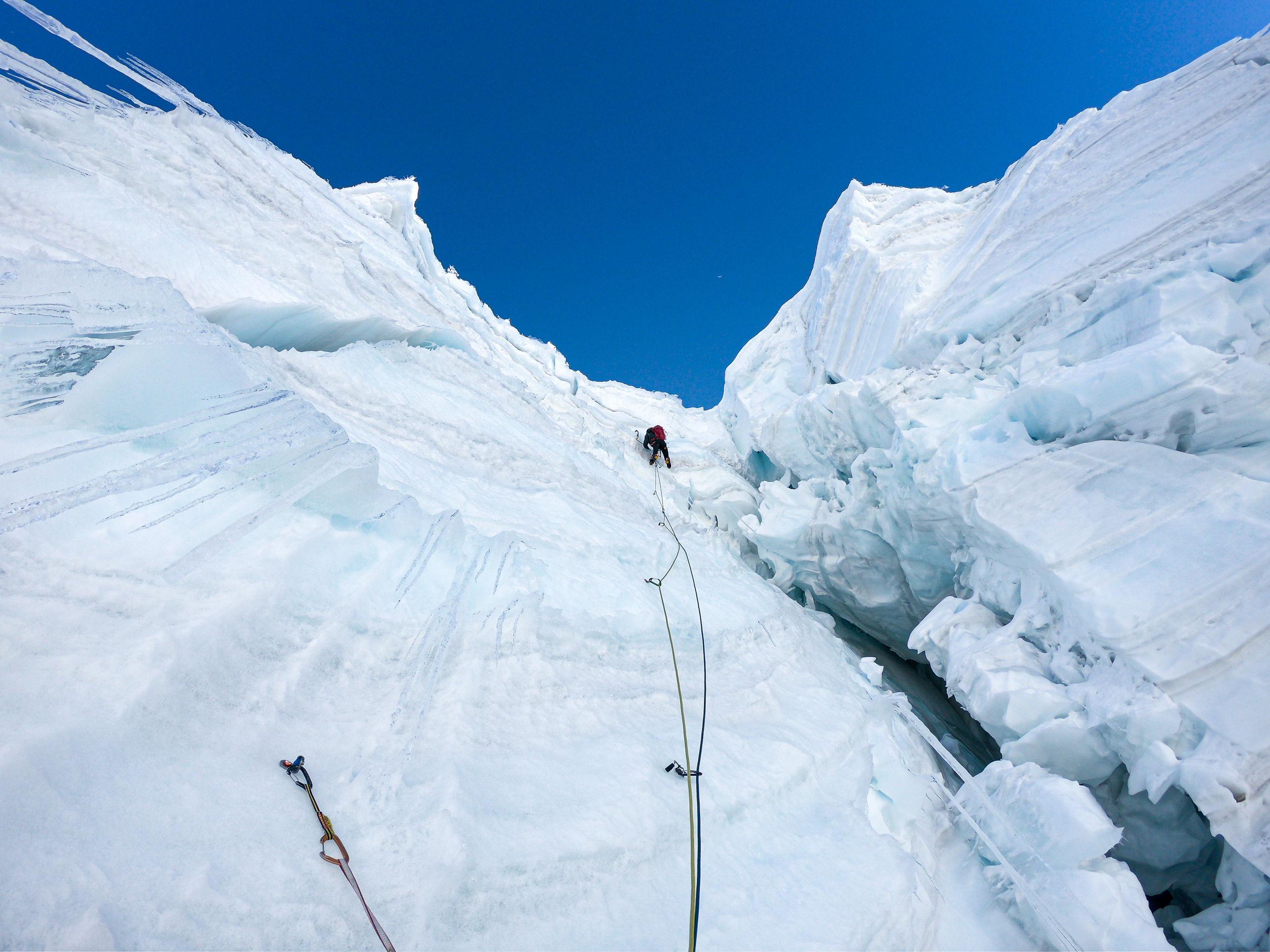

Share this Feature